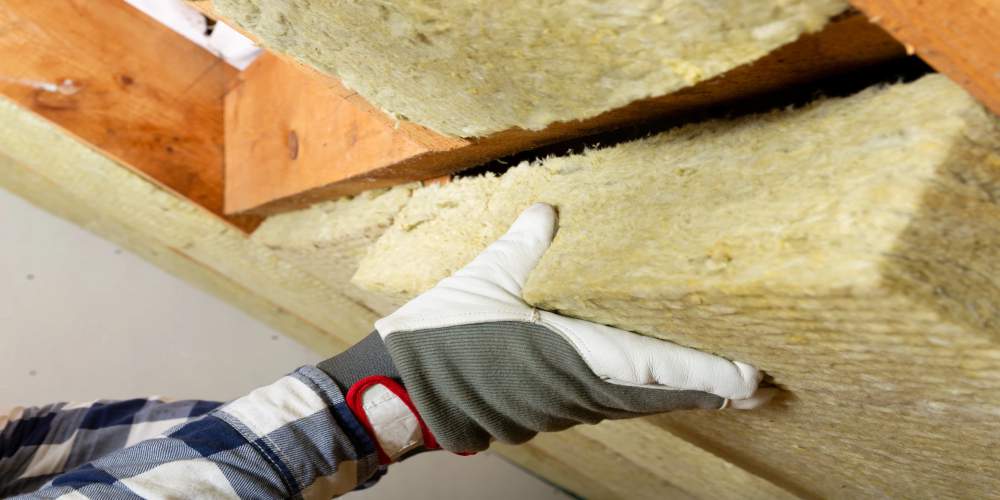High-Performance Insulation Materials: Enhancing Thermal Resilience
New Heaven Developers July 16, 2025

Why Insulation Matters More Than Ever
Insulation today is no longer just about staying warm during the winter months. It is about year-round energy efficiency, occupant comfort, and effective climate control inside the home. In high-risk regions like California, where wildfires and sudden weather shifts are common, insulation must perform under extreme pressure:- Intense summer heatwaves can drastically raise indoor temperatures, placing additional strain on HVAC systems.
- Sudden cold snaps can cause indoor discomfort and moisture issues such as condensation buildup.
- Power outages during disasters leave homes vulnerable without passive thermal protection.
Advancements in Insulation Technology
Traditional insulation options like fiberglass batts and blown-in cellulose still have their place. Some of the high-performance insulation types we rely on include:Rigid Foam Panels (Polyiso, EPS, XPS)
- Provide superior R-values per inch, meaning better insulation with less thickness.
- Exhibit minimal moisture absorption, protecting against mold and rot.
- Ideal for exterior wall sheathing and roof assemblies where continuous insulation is critical.
Spray Polyurethane Foam (SPF)
- Expands to fill gaps and cracks, sealing hard-to-reach spaces.
- Functions as both insulation and an effective air barrier.
- Perfect for retrofit projects or irregular cavity spaces where traditional materials can’t reach.
Mineral Wool (Rock Wool)
- Naturally fire-resistant, making it excellent for wildfire-prone areas like Pacific Palisades.
- Water-repellent and mold-resistant, ensuring durability even in humid or wet conditions.
- High-density options also improve acoustic performance, enhancing indoor comfort.
Vacuum Insulation Panels (VIPs)
- Ultra-thin panels offering exceptionally high R-values.
- Perfect where space is limited but thermal performance cannot be compromised.
- Often used in high-end retrofits or specialized zones of a home.
Aerogel Insulation
- One of the most thermally efficient materials available today.
- Originally developed for aerospace, now entering residential use.
- Lightweight, flexible, and sometimes transparent, allowing creative insulation solutions.
Building a Continuous Thermal Envelope
A home’s thermal envelope includes walls, roofs, floors, and openings such as windows and doors. Every break in this envelope—like a window frame or vent—is a potential weak point for heat loss or gain. That’s why we emphasize:- Continuous insulationstrategies that minimize thermal bridging and heat leaks.
- Air barrier systems paired with insulation to maximize energy efficiency.
- Radiant barriers and reflective foils, especially in attics and sun-facing exterior walls.
Resilience During Natural Disasters
Thermal resilience is about more than just comfort—it’s about survival during and after natural disasters. At New Haven Developers, insulation choices are tailored to specific risks faced by the communities we serve:- In wildfire zones like the Palisades, we use mineral wool and closed-cell SPF, both highly resistant to ignition.
- For flood-prone neighborhoods such as parts of Altadena, water-resistant rigid boards prevent moisture absorption and mold growth.
- During extreme heat events and winter storms, passive thermal protection helps families stay safe even during power outages.
Retrofitting Existing Homes
Many homeowners in our communities are not building from scratch—they need smarter, more efficient ways to retrofit older homes. Our retrofit services include:- Attic blow-in insulation upgrades for quick and effective thermal gains.
- Cavity-fill foam injections to improve insulation in inaccessible wall spaces.
- Exterior over-cladding using rigid foam panels before installing new siding.
Educating Homeowners for Better Living
We believe informed homeowners make the best decisions about their homes. That’s why we:- Walk clients through insulation options using visual mockups and samples.
- Provide detailed performance comparisons, including R-values, costs, and fire ratings.
- Explain how insulation works together with windows, HVAC systems, and moisture control.
Our Standards and Promise
Our team stays current with:- Latest material breakthroughs from industry leaders and research labs.
- Building code updates and how they affect insulation requirements.
- Real-world performance data from local and similar climate zones.
